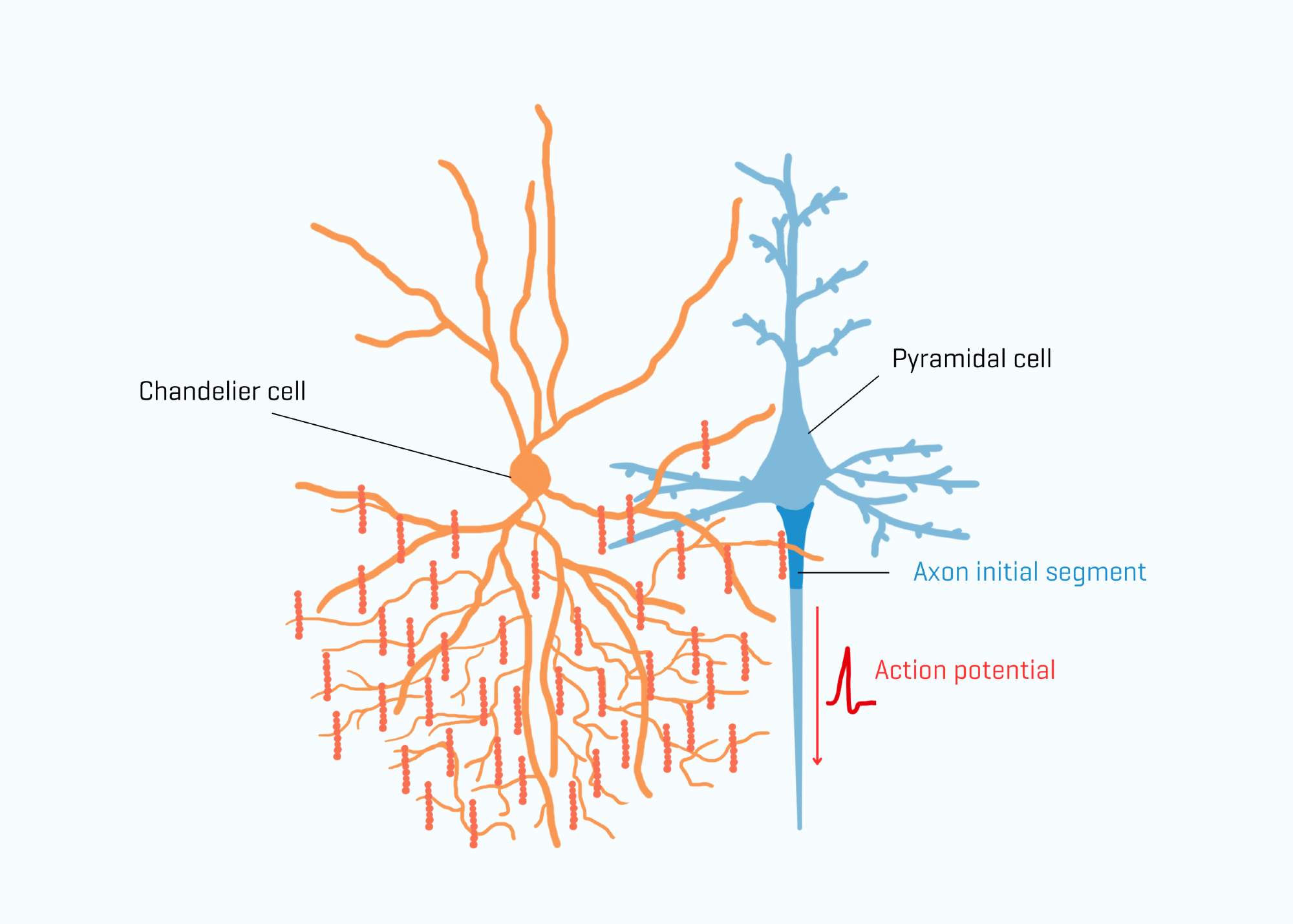According to a recent study from the Netherlands Institute for Neuroscience, certain brain cells, known as chandelier cells, become active in unexpected circumstances.

Image Credit: Netherlands Institute for Neuroscience
Koen Seignette from Christiaan Levelt's lab teamed together with his colleagues from the Kole and Roelfsema labs to investigate this phenomenon in greater detail. Together, they studied chandelier cells, a unique kind of brain cell that is present in minute quantities in the cortex. They only inhibit one area of other cells, unlike other inhibitory brain cells, but shockingly, little is known about why and when.
New Mouse Model
We already knew quite a lot about the function of most types of inhibitory brain cells, but chandelier cells were a mystery. This is because they are not clearly marked genetically and cannot be properly examined. We have now obtained a mouse model in which the chandelier cells are fluorescently labeled. This allows us to image them live and determine when they are active. That offers new opportunities.”
Koen Seignette, Netherlands Institute for Neuroscience
Koen Seignette explained, “As a first step, we looked at what chandelier cells in the visual cortex respond to. What happens to these cells when the mouse starts running or when we present visual stimuli? In one of the experiments, we had the mice walk in a virtual tunnel. When the mouse ran, the tunnel moved, and when it stopped, so did the tunnel.”
Koen Seignette said, “Using this setup, we could create an unexpected situation by stopping the tunnel while the mouse was still running. It was during these events that the chandelier cells started firing like crazy.”
Plasticity
We see that the type of stimulus does not actually matter that much; what matters is that it is unexpected and surprising. We also noticed that habituation and change occur, comparable to the aforementioned example of the new building. At first, the cells react strongly, but after repeated exposure, the activity becomes weaker. This shows that the cells are able to adapt, which is a concept known as plasticity. This plasticity also occurs at a structural anatomical level: we can literally see changes in the synapses chandelier cells form on other brain cells.”
Christiaan Levelt, Netherlands Institute for Neuroscience
Christiaan Levelt said, “What makes this study important is that this is the first really comprehensive study of chandelier cells in the visual cortex. We have determined not only what they respond to but also which brain cells they form connections with and what their influence is on other brain cells. This has never been looked at in such detail before.”
Christiaan Levelt further continued, “Understanding the role of these inhibitory neurons in the cortex is crucial for many processes, including learning from unexpected circumstances. We all know that you remember things better when they really surprise you. If the prediction is incorrect, that’s where you can find the information. You need plasticity to update your insights, and these cells could play a role in that.”
Why are Chandelier Cells So Special?
Because of their similarity to a chandelier, chandelier cells are a type of inhibitory brain cell that focuses on the axon initial segment, or the beginning point, of electrical signals in pyramidal cells, which are the most prevalent in the cortex.
It was previously believed that by obstructing the action potential, chandelier cells may exert significant control over pyramidal cells. Contrary to earlier conclusions, the current research surprisingly reveals that this effect is actually quite weak.
Source:
Journal reference:
Seignette, K., et al. (2024). Experience shapes chandelier cell function and structure in the visual cortex. eLife. doi.org/10.7554/eLife.91153.